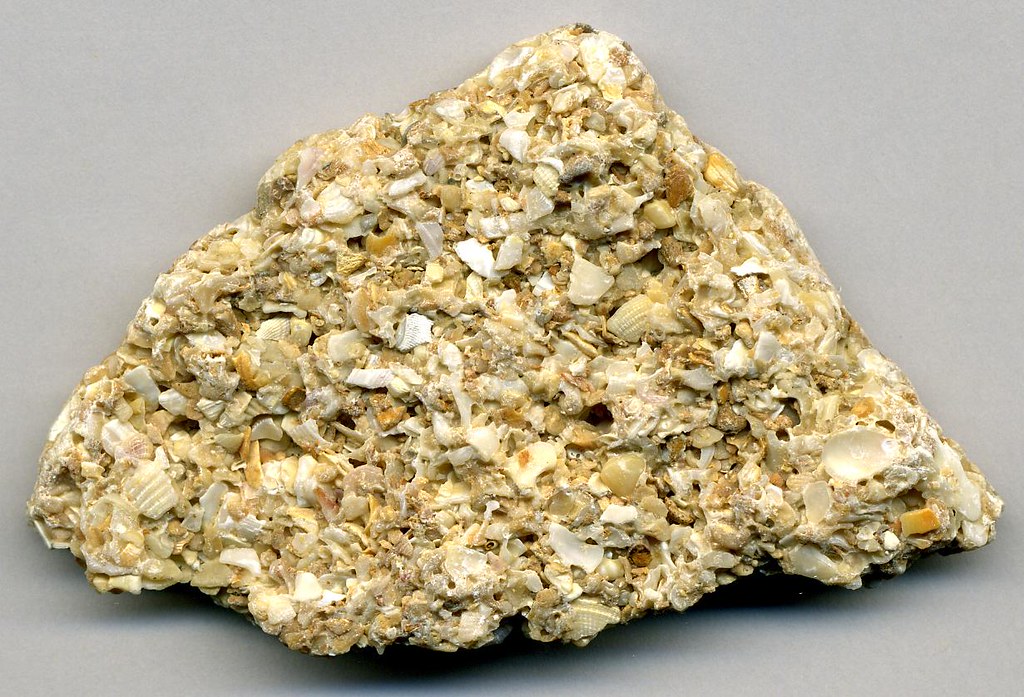Monday, February 22, 2016
Monday, February 8, 2016
Rock Type: Limestone
Limestone
Limestone is a sedimentary rock composed of the carbonate minerals calcite and aragonite. Limestone can form through deposition or precipitation and there are different names for these rock types dependent on the formation / composition of the rocks. Limestone is not found everywhere and it only occurs in areas where underlain sedimentary rock exists.
Limestone Rock Types -
Chalk: fine grained; white or light gray in color. It is formed by the calcium rich shell remains of microscopic marine organisms or certain types of marine algae.
Coquina: calastic; tan or white in
color. It is formed mainly by the broken shell remains of marine organisms.
Fossiliferous Limestone: calastic; grey in color. It is
formed by the remains of marine organisms: shell and skeletal fossils.
Lithographic Limestone: very fine grained; white or
light gray in color.
Oolitic Limestone: fine grained; white, gray, or
yellow in color. It is formed by small spheres of calcium carbonate particles
“oolites” through precipitation.
Travertine: banded; white in color. It is
formed by evaporative precipitation, often in a cave and produces formations
such as stalactites, stalagmites and flowstone.
Tufa: porous; white or gray in
color. It is formed by precipitation of calcium rich waters such as a hot
spring, lakeshore or marine environment.
Uses For Limestone -
construction
architecture
food additive for animals
(calcium source)
cosmetics/toothpaste
ingredient in paper, plastic,
paint
remineralization
Resources:
Sunday, February 7, 2016
Minerals: Fluorite
Fluorite is classified as a halide
mineral, its chemical formula is CaF2 - chemical composition is
calcium and fluorine. Fluorite occurs naturally world wide and
there are many industrial purposes that the mineral is used for. Acid
grade fluorite is the most pure form of CaF2 (97%) and is used by the chemical industry in the production
of hydrofluoric acid. The
most pure forms of calcium fluoride are colorless; however, impurities cause
the fluorite mineral to form with many different color variations.
Ceramic grade fluorite (85-96% CaF2 )is used in ceramics for the production of
glaze and enamel as the mineral in this form has the properties of producing a
hard glossy surface. Metallurgical grade fluorite contains between 60 and
85% CaF2 and
is used in the production of of iron, steel, and other metals. Other forms
of fluorite especially vibrant colored forms of the mineral may be
cut for decoration or collectible purposes but are too soft to be cut
for jewelry (hardness of 4).
Wednesday, February 3, 2016
What is environmental geology?
After giving it some more thought, I would say that
environmental geology is essentially the study of earth and earth processes / systems.
As Jenny mentioned in class, “a system is more than the sum of its parts” –In
order to grasp the cause, severity, and identify solutions for environmental
concerns, one must first understand the pieces that link together forming the
system(s) that are affected. I think this is a really important idea to
understand, especially when looking at matters from a scientific perspective.
Subscribe to:
Comments (Atom)
